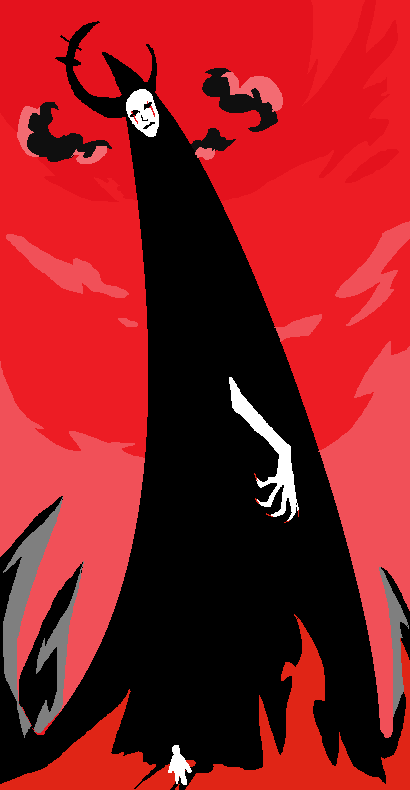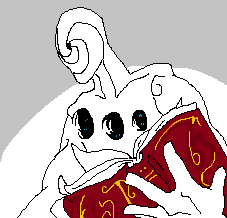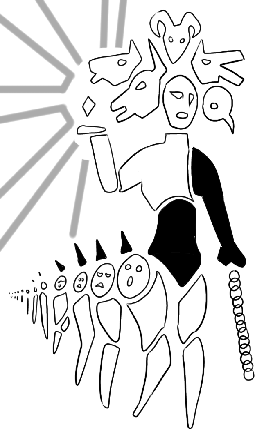Religion (Grisaire Supplement)
There are twelve gods who sit upon the thrones of Grisaire. They were the creators of the world, and they watch upon the world with lazy amusement. Their servants, the Old Ones, roam the world as drifting influences. The opponents of the throne, the Uncreated, bide their time to wreak havoc on all creation. Belief and religion is primarily based on these entities. This page also covers some more niche areas of things that do not necessarily encompass deity worship, like spiritualism. Each deity offers unique methods of reverence and worship, which is detailed further on their individual pages.
Deity Worship[edit]
Because the influence and presence of gods are very clearly felt in Grisaire, it only makes sense that deity worship is very prominent. Most people across the world believe in gods one way or another, be they the Thrones or some of the few other entities.
The Twelve Thrones[edit]
The Grisarian pantheon is known as the Twelve Thrones. Their powers are known to be tied to twelve metaphorical thrones on which they sit to watch the world. Grisaire's pantheon is not very large, thus gods cover larger swaths of domains sometimes. Using this as a guideline, feel free to tack on additional domains when using the gods, since their associations can have implications for different DMs to interpret.
Charylt, of the Wastes[edit]
The tentacled and eldritch form of Charylt is believed to be the origin of races of oozes and various amorphous monstrosities and aberrations. Charylt is said by some to have been a foreign entity, like a parasite, living within Primus, which allowed it to become equivalent to the others born of the original Dream. Others have said that Charylt was born of flesh, from Primus' innards and mucus, rather than the original Dream. There is speculation on Charylt being born of a different dream, and so forth. In short, Charylt is a rather enigmatic figure, and definitely one of the lesser revered. Charylt is not a malicious being, but it is also known to act in a very bestial way that encourages base behaviors. Its primary powers are known to appear insidious, using tides of ooze or melting things with a touch of its acidic tentacles. Charylt is said to also be a messenger god, able to travel between the divine thrones and the City of Ashes.
M'iaq, the Liar[edit]
The art of trickery is said to have been bestowed upon sapience by M'iaq, god of tricksters. M'iaq is often seen as malicious and yet also a favored god because he would allow people to get away with deeds like thievery and fraud by pulling the wool over the eyes of others. Those who ask his favors often have to beware themselves, as M'iaq is far from a god of luck. He is one of caprice and is also a patron of backstabbers and betrayers.
Resoolt, the Spire Queen[edit]
The towering, untouchable mountain that is Resoolt is an unfathomable goddess of sadism and cruelty. She is wholly favoring of elimination of the weak, for the purging of weakness. Her divine realm is the Domain of Spires, a place of pain that threatens to push one into madness. While she is a neutral deity, this only means that she spreads the pain around equally. Her maxims adhere to a very survivalist nature, but she is also known to have been a patron of torturers and unsavory activities that condoned unnecessary pain. While this call can sound quite unappealing, her reputation for granting great strength on her favored draws power-hungry people to her patronage.
She is commonly worshipped as a punishing deity in Premius, Hagai, and even in small followings in Adum, Aerzale, and Khaire. In Edim and the Doru Islands, she is seen as a granter of trials through which heroes and warriors may prove their worth to gain her favor and unparalleled strength.
Manus Infinitum, the Maker[edit]
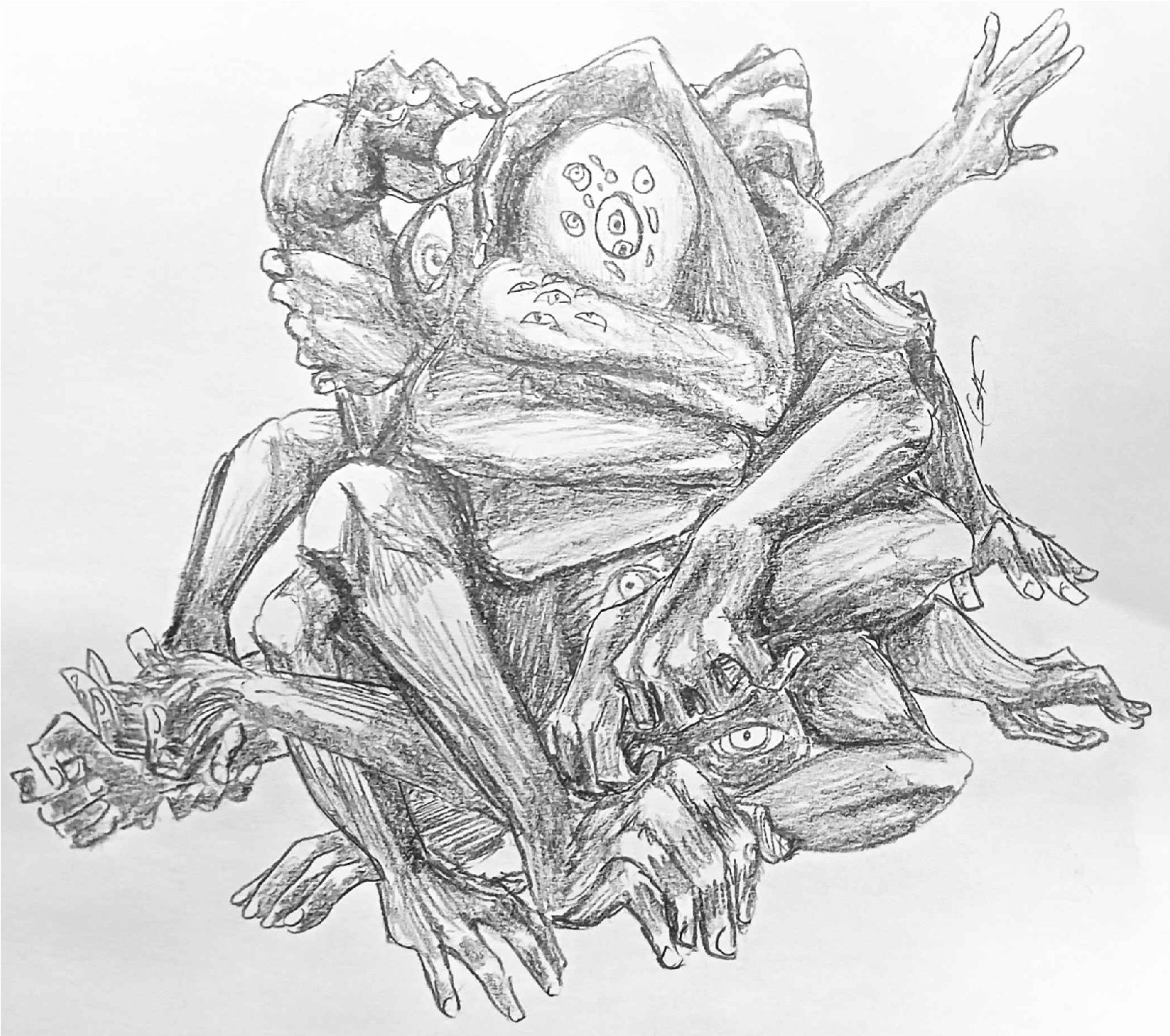
Literally "infinite hands," Manus Infinitum is the primary deity of artificial creation. Symbolizing the craft done by creatures and their hands/pseudopods/similar appendages, Manus Infinitum often appears as a nongender mass of prehensile limbs. Cultures heavily based in craft in any form, be it arts or weapons, all pay homage to Manus. There is also a combat aspect to Manus, as some warriors will pray to Manus for steady hands in battle. The churches of Manus are often tied to organizations like blacksmiths, artisans, and other producers of artificial creation. This includes also constructs, which are believed to first having been fashioned by Manus.
Tribore, the Heartless[edit]
A god of scholars and spellcasters in general, Tribore is said to have gouged out his three hearts to devote himself to logic and eschew all emotion. The void left in his heart is believed to harbor parasites that come to be known as "That Which Dwells Between Spaces," which is what interests the Void Society. Tribore is the supposed origin of written magics throughout the world, having created the original writing system of runes. Utilization of the Veil for magic comes from Tribore having wrestled it into a form that can be constructed through the intention of casters. Wizards primarily subscribe to Tribore in hopes of his bestowing great magic upon them. Tribore, in his pursuit of magic, is known to have created a lot of the construct races of Grisaire, or aided in devising the recipes that led to their conception, like the shadia.
Survelem, Purveyor of Darkness[edit]
Survelem is the god commonly associated with the undead. The domains of both death and light fall under Survelem's control, though the latter is lesser known. Survelem commonly appears to be a face in darkness, with both male and female depictions. Despite the darker connotations, Survelem's influence is seen as a vanguard against rising violent undead. The creation of intelligent undead, like liches, is attributed to rites that Survelem's followers practice. Additionally, the rituals necessary for burial and funerary processions also pay homage to Survelem. These rites and rituals have eliminated a primary alignment fixture for undead, and so even zombies have a possibility of being risen neutral like a ghost.
Plegothos, the Watcher[edit]
The eternal eyes of the Thrones is Plegothos. Often portrayed as a heavily cloaked figure shrouded in secrets, it is unknown if they are humanoid or something more nebulous. Depictions often show a shroud or a clam in the background with a pearl peeping out. Plegothos was known to be the keeper of the Eyes of Infinity. Due to an interaction with Ongana, one of the Eyes was lost and Plegothos thus has soured against the dual-faced goddess. Plegothos rules over the domains of peace and order. The diety itself is obsessed with observation. From this, Plegothos taught people to be observant and to surveil one another, leading to the creation of law enforcement policies, as well as activities like espionage. It is said that Plegothos knows all secrets but guards them jealously, sometimes to a fault.
Tarekaya, Twin Dragon[edit]
Tarekaya is a dual-headed figure believed to be the origin of the ocean, as well as all its movements, and precipitation. The dragon's two heads are said to be separate, one being female and another being male. It is said that, originally, Tarekaya was one head. During the fight to kill Primus, her head was split in two. While the heads regenerated, one of them turned into a separate personality. In addition to the dragon's powers over water, Tarekaya is often used as a symbol of the intertwined nature of the genders and sexes, as well as other dichotomous concepts like creation and destruction. Tarekaya is responsible for the creation of most of the world's aquatic life forms, as well as draconic creatures like the fox'smanuh. However, Ongana claims creation over the chromatic and metallic dragons. Tarekaya is believed to have created draconic beings that were not as partial as they, like gem dragons, faerie dragons, and dragonborn.
Temples dedicated to Tarekaya span the world in awe of the dragon's power and status. Lozor has proportionally the largest following of the dragon god, followed by west Endix. Depending where one sees it, art of Tarekaya differs in depicting the dragon more like a horned monster or a lung. Tarekaya's additional aliases include Xiongmei Long, Sou-ryu, and Crossmaker.
Igu-Rab-Ichi, the Warmonger[edit]
The controversial figure of Igu-Rab-Ichi, Igu for short, is mired not only bloodshed, but also money. His influence is believed to have created the force in the world known as "gier," or "greed," which he uses to toy with the hearts of mortals. He is a prime patron of the Gilt Society. He is known to collaborate with M'iaq in the creation of devil creatures, and is the father of historically belligerent races like orcs and goblinoids, and territorial races like goliaths. Giants and giant-kin races like the antaeud are also partially his brain children.
Darakan'ta, Mother Nurture[edit]
When the world had been torn apart and put back together, it was the healing touch of Darakan'ta that made it possible for life to flourish on the broken and bleeding world. She is known to be a goddess of fertility, growth, and life. All aspects of nature, from the wild wood, to the fertile farmed fields, are considered within her domain. She encompasses many aspects of the natural world, including symbols of natural beauty, like mountains, and even natural cycles, like the lunar calendars. The two moons in the sky are said to be her breasts, called the Milky Moons or Lunar Teats. She was the creator of the sacred trees, meant to grant protection to the natural world from harmful presences. Her nurturing touch also created most of the plant races in the world, like the cijelese and zanthani.
Orshiidi, the Arrow Maker[edit]
Orshiidi is considered a patron god of innovation; that is, artificers, tinkers, and all sorts of craft. Where Tribore is cold and calculating, Orshiidi is playful and quick on his feet. Known for creating the sapience of tools and ingenuity, Orshidii is sometimes also seem as a god of civilization in Grisaire. This imagery is bolstered by the fact that Orshidii's patronage of the Premier Force Empire led to a massive industrialist expansion, as well as conquest. Typically, those like the cijelese are highly abhorrent of him for this reason, seeing his gifts as the signs of corruption and decadence in modernity.
Ongana, the Gatekeeper[edit]
The goddess Ongana is considered a two-faced deity. She symbolizes both day and night. One of her eyes is the life-giving sun which watches over the world's affairs from the day. Her other eye is said to be the night, as it is empty and dark. But the stars in the sky reflect her infinite curiosities, and perhaps it is not so empty after all. She is said to have created both metallic and chromatic dragons simply to see them fight and see if they develop minds of their own.
Primus, Origin[edit]
Alignment. Chaotic Good
Domains. Creation
Divine Rank. Vestige
The original singularity once drifted through time and space in a deep slumber. From the schemes of the original being's dreams, what was once one was torn asunder to create new life. But the essence of Primus is in everything. Still vying for vengeance, Primus pushes bubbling primal instinct and inner imperfection to light, manifesting in a variety of ailments, both physical and spiritual. It is unknown for sure, but Primus likely aims to bring the thrones crashing down to the world made of his flesh and blood.
There are a few cults and sects throughout Grisaire that oppose the current Twelve Thrones, seeing them as robbers and unrighteous gods. These people will often subscribe to Primus, keeping the memory of the ancient vestige alive. As the gods continue to show indifference, it is likely that his numbers grow with the world's imperfections being exacerbated and social ills plaguing daily. Most depictions of Primus appear to be a gigantic serpent creature. In renditions of the Great Dismemberment, the serpent was cut to pieces and its flesh and blood were fashioned into what becomes modern-day Grisaire.
The Uncreated[edit]
The eldritch beings who dwell within the world core are an amalgam of dark desires supposedly spawned of Primus's latent vengeance. However, there are other theories about them being foreign bodies that crashed onto the world within the Shower of Stars event near the time of Genesis. This theory assumes that the meteors which fell contained parasitic beings that eventually leached onto the earth and took form. While most uncreated take the form of minor eldritch horrors, there are three notable ones that have carved their names of terror in history and are known to be hulking terrors that pose significant threat to the world. One shudders to think of the place these creatures hailed from.
Tsa'Horoth, Horror of Eyes[edit]
Appearing often as a mass of jelly-like eyeballs, Tsa'Horoth is said to be able to cover the world three times over if its mass were spread out into a 1-foot sheet. Tsa'Horoth is known to appear in dreams and even poison drinking water with its essence. Those who consume his essence are liable to fall ill and mutate into eldritch beings under Tsa'Horoth's control. This enigmatic mass is said to reside within the underground city of R'Leth.
Egan-Shiloga'Troh, Swarmmother[edit]
Egan is often depicted as a large chimeric creature of titanic proportions, with grotesque growths, tumors, and mixes of bestial traits in all forms all over the main body. Because this is a vague form and Egan is said to always be changing, artistic interpretations are many and varied. The body of Egan is said to be ever-sustaining, able to reproduce endlessly without need for typical nourishment. Many of the eldritch horde making up the Uncreated comes from Egan's flesh. In addition to creatures like aberrations, Egan also creates the foulest creatures like demons and yugoloths of Grisaire.
Jjglo'ärogsh, Sleeping Goliath[edit]
The one-eyed giant Jjglo'ärogsh is said to be asleep deep within R'Leth, at the supposed core of the world. Little is known about Jjglo'ärogsh save that the titan is a powerful influencer of dreams and nightmares throughout Grisaire. Jjglo'ärogsh has been known to drive people insane and even make them commit horrendous crimes out of spite against the world and the gods. In these dreams, Jjglo'ärogsh is shown to be a towering black mass, with 700 wings that span like bridges to other worlds. They say Jjglo'ärogsh lost one of his eyes fighting with the gods sometime in the Days of the Forge and thus rests to recover from his wounds. His eye was said to have been broken into pieces. These eye fragments are scattered about the world, and said to be embedded in some artifacts.
The Old Ones[edit]
The Old Ones are the first beings created by the twelve gods, imbued with great powers to serve as proxies in a way. They are substantial forces of nature, some with powers like that of a lesser deity even. Others are simply titanic beings that can rival a tarrasque in threat level. While they were originally made to be proxies, some of them remain as distant as the gods, simply drifting about with the times of the terra. Nonetheless, their status demands respect, and they are often worshiped as much as deities as well, particularly in smaller communities, where they can be central patrons.
Akaei, the Red Island[edit]
This gigantic red ray of the oceans roams about, sometimes surfacing and appearing like an island that appeared overnight. Akaei is known to have given life to a lot of sea creatures with the silt produced from its body.
Aeolus, Sweltering Guardian[edit]
The first Old One made by the gods, Aeolus is known to create blazing winds as well as volcanic eruptions on Grisaire. Aeolus is often depicted as a metallic being with a burnished and fiery core that materializes out of thin air.
Zan'ya of True Night[edit]
Zan'ya is a feminine creature with the upper body of a woman and the lower body of an eastern dragon. She is known to encircle the world every night under the cover of darkness.
Gladius, Onyx Blade[edit]
Appearing as a sky-piercing mountain, Gladius is a stationary being said to be the highest peak of the Regis Range.
Eternalogia[edit]
This strange and enigmatic entity is a brainchild of Darakan'ta. It is rarely known to any and mentioned only in esoteric books. In truth, Eternalogia is a massive creature that arises only when the four great Sacred Trees of Grisaire have been felled. It is a final line of defense against the Uncreated and the forces of R'leth. Gnostic sources describe it as a shell that hardens in reaction to Uncreated, and is a cradle that keeps the City of Ashes within a barrier. Some say that when the trees fall, Eternalogia rises from its slumber in the form of a giant tree creature that reaches the skies.
Non-Deity Based Beliefs[edit]
Whether organized or not, there are practices that eschew strong worship of a deity, but do entail ritual, tenets, and moral code. The Mortal Masons organization, for example, is very anti-religion and prescribe a regimen of codes for members to distinguish themselves among people in a world where most worship gods. Not all people subscribe to something as fringe as that. Some of these non-deity based beliefs and practices can actually be supplemental to core religion. These practices are the fundamentals of many important things in Grisaire, like folk medicine, and cultural attitudes towards various facets of life.
The Veil[edit]
Spiritualism[edit]
See also Spirit Realm
Channeling[edit]
Embodiment of Feats[edit]
Beliefs[edit]
- See also Paladin
Gods are not the only ones that have tenets. Normal, everyday people can live by those, too. However, most fail to or just don't. Tenets that are particularly strict can relate to various everyday ways of life and restrict them in many ways, making it difficult for an average person to stick to them strongly. It is why paladins are particularly special among martial classes. They have the willpower and adherence to uphold these tenets in such a way that it grants them power. However, their lives are not easy and their powers are constantly on the verge of being lost because they violate their sworn oath.
Tenets and beliefs do not have to be religious, but they should affect how one lives. They are also often grouped within a certain belief system. Below are a few kinds of non-deity, grouped tenets practiced around Grisaire.
Sufrenism[edit]
Those who follow Sufrenism know the sorrowful tragedy of the White-Haired Maiden, the story of the betrayed knights of Darmaseth, and various other true tales about people who are wrongly persecuted. Their suffering and persecution elevated their status in life and gave them something in return for their hardship. Such is the basis of Sufrenism, which is essentially martyr worship. Named after Premutian philosopher Rolo Sufréne (9,780-9,835 AP), the lives of the suffering show the path to enlightenment, and suffering is the unfortunate thing to be embraced as it is omnipresent. Martyrs should be emulated in their lifestyle and punishment embraced. The real radicals of this belief will go as far as public self-flagellation to prove their suffering. Needless to say, this is a bit of a fringe belief, with only a few sects existing in Lozor, Khaire, and Premius.
Eternologus[edit]
Eternologus is a belief in life and preservation of it, based on the Old One, Eternalogia.
Nabilism[edit]
Nabilism is named after "Nab il' Tribore," the named writing tool used by the god Tribore, supposedly. This belief holds that existence evolves through verbal exchange and preservation of it. It's an esoteric belief formed by scholars strongly beheld to the Tribore faith in particular. Succinctly put, things said exceed those thought, and things written exceed those simply spoken. When put into practice, this has come out to even discriminating against cultures that lack a written form of language in favor of those that have. This is because what is said is believed to be brought into existence, and writing it allows it to be born multiple times.
This belief is one of the original intentions behind the creation of spell scrolls in Grisaire, as people wanted to mimic the great Tribore in his feats of magic. The god of scholars and the arcane is known for creating Arcanish as a means for magic to be symbolized. This sort of thought is a driving principle behind the art of ink masters, who tattoo their bodies with spell scripture.
An extension of Nabilism is material Nabilism, believing that being able to put magic into a form more physical than words is the highest expression of the arcane. Believers of this place strong emphasis in constructed magical items.
Ancestral and Filial Piety[edit]
A popular practice among many races, dragonborn and dwarves being prime examples, is the worship of ancestry and those that came before. In lieu of deities, an altar for the family's passed loved ones may be prepared in the house. Tales of feats performed by those before, and the preservation of their names and memories, are kept alive through oral and written tradition. Some practices differ in naming descendants after ancestors, as some see it to be disrespectful while others believe it is honoring those prior.
| Grisaire Campaign Settingv | ||||||||
|---|---|---|---|---|---|---|---|---|
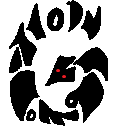
|
Players Guide | Races, Backgrounds, Classes, Spells & Magic, Downtime Activities, Feats | ||||||
| World of Grisaire | History, The World, Society, Cosmology, Religion, Worldly Mechanics, Languages | |||||||
| Dungeon Master's Guide | About, Treasure, Bestiary, Tables, Help, Adventures, NPCS, Variant Rules, | |||||||
| ||||||||
Back to Main Page → 5e Homebrew → Campaign Settings → Grisaire
